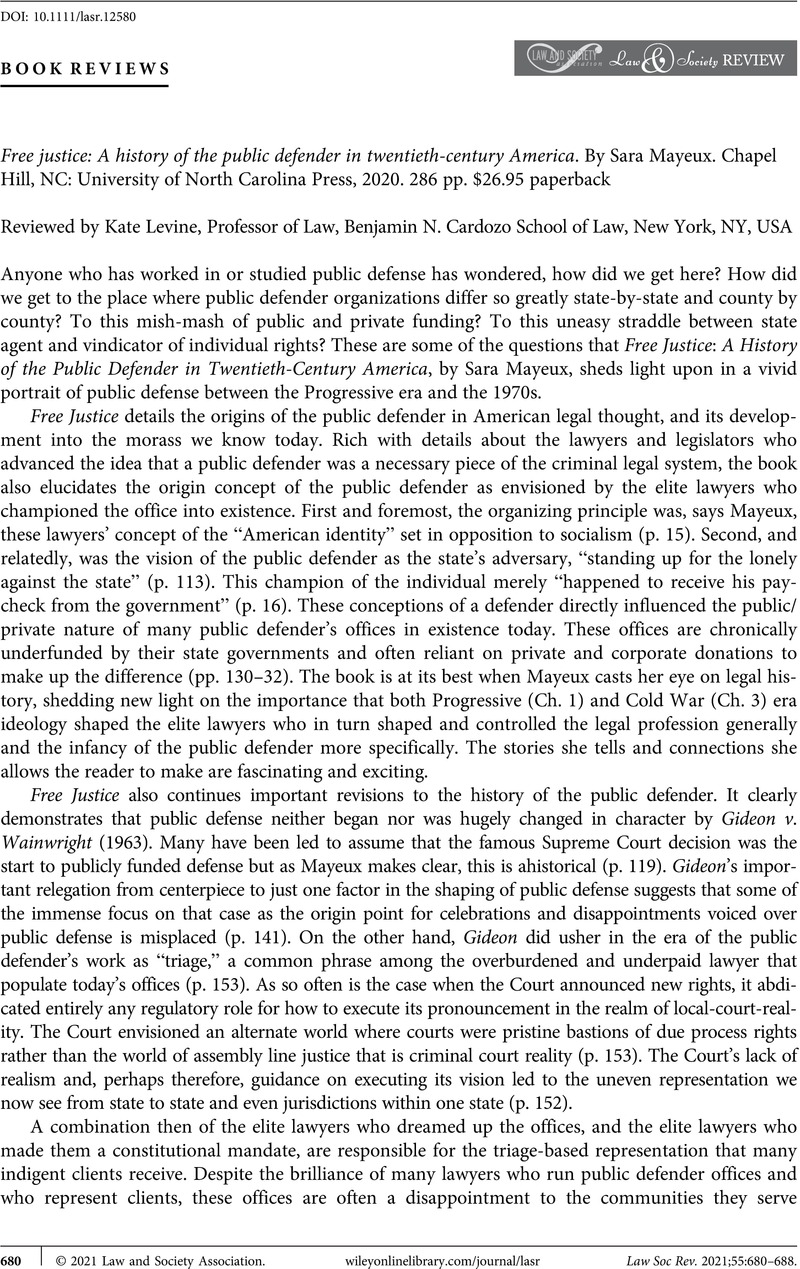No CrossRef data available.
Article contents
Free justice: A history of the public defender in twentieth-century America. By Sara Mayeux. Chapel Hill, NC: University of North Carolina Press, 2020. 286 pp. $26.95 paperback
Review products
Free justice: A history of the public defender in twentieth-century America. By Sara Mayeux. Chapel Hill, NC: University of North Carolina Press, 2020. 286 pp. $26.95 paperback
Published online by Cambridge University Press: 01 January 2024
Abstract
An abstract is not available for this content so a preview has been provided. Please use the Get access link above for information on how to access this content.

- Type
- Book Reviews
- Information
- Copyright
- © 2021 Law and Society Association.
References
REFERENCES
Clair, Matthew. 2020. “Unequal Before the Law.” The Nation, December 14. https://www.thenation.com/article/society/sara-mayeux-free-justice-public-defenders/.Google Scholar
Hoag, Alexis. 2021. “Black on Black Representation.” N.Y.U. L. Rev. 96. https://papers.ssrn.com/sol3/papers.cfm?abstract_id=3785013.Google Scholar
Hoag, Alexis. 2022. “The Color of Justice.” Mich. L. Rev. 120. https://papers.ssrn.com/sol3/papers.cfm?abstract_id=3909453.Google Scholar


